More than seven decades after the original model (which only went out of production in 2016), the Land Rover Defender is back. Keeping the spirit of “going everywhere”, Defender reinvented itself with a philosophy much more adapted to the new times.
There's an effort to keep the jeep's stylistic DNA boxy, but "remastered" so that its design can't be labeled retro, something style directors almost never like (Gerry McGovern explains that the new Defender "provides a lot of flair." homage to the past, without it being held hostage”).
The vertical front and rear sections remain (even at the expense of aerodynamics) and it is still possible to attach a huge amount of accessories to the bodywork — from the wheel on the side opening tailgate to the side ladder to reach the roof.
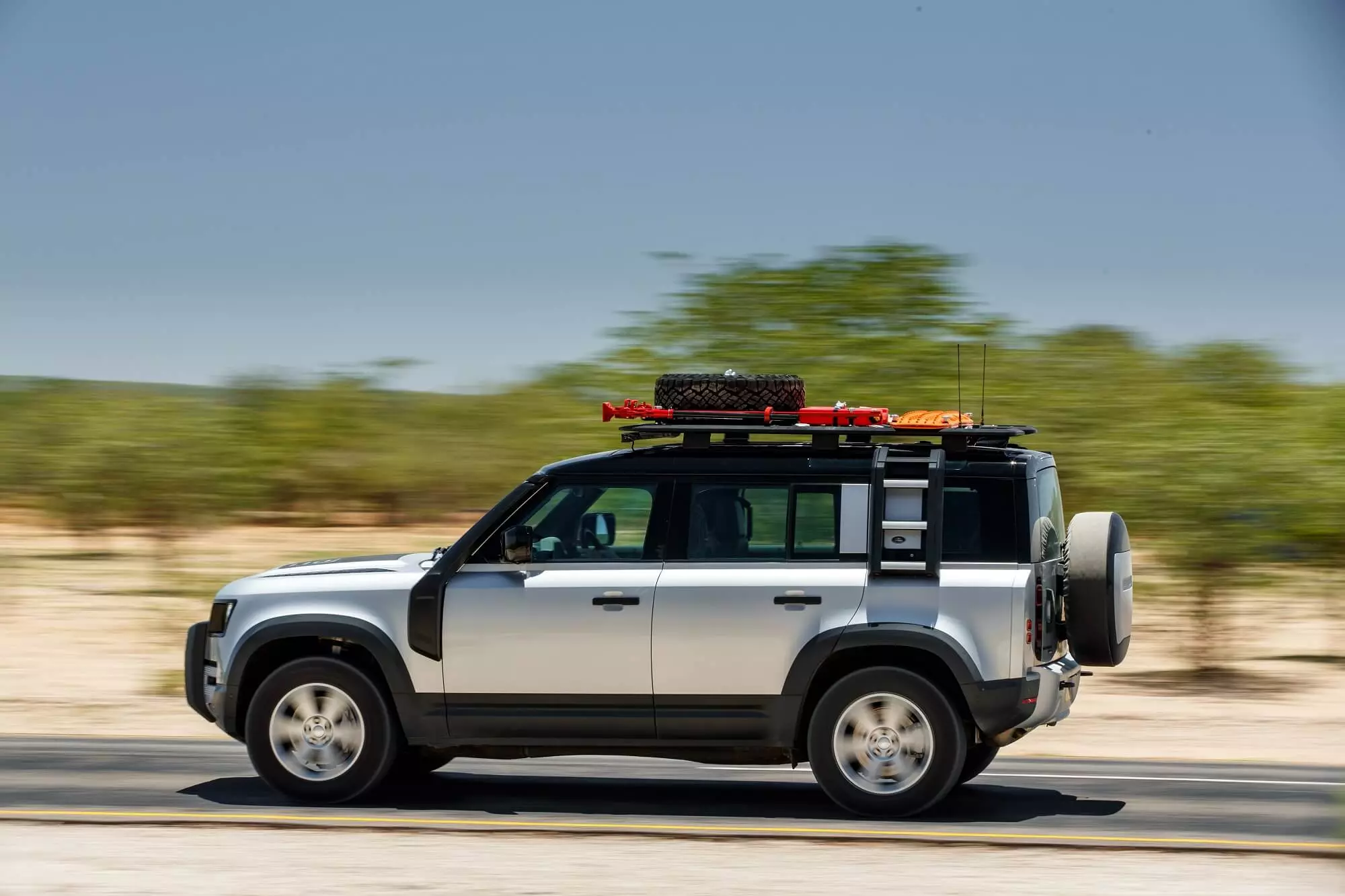
But when we are not in the heart of Africa but in the “urban jungle” — even with some incursions through fields and valleys, secondary roads more or less removed from the hustle of city traffic — the 4.76 meters long (5 with the wheel “on the back”) and the Defender's 2 meter width create a certain “claustrophobic discomfort”.
Defender's “hearts”
Even the new Defender's weaker engine has nearly twice the power of its predecessor, delivering performance that frees Defender from the obstacles of traffic and sets it apart in a whole new jungle: highways and urban lanes.
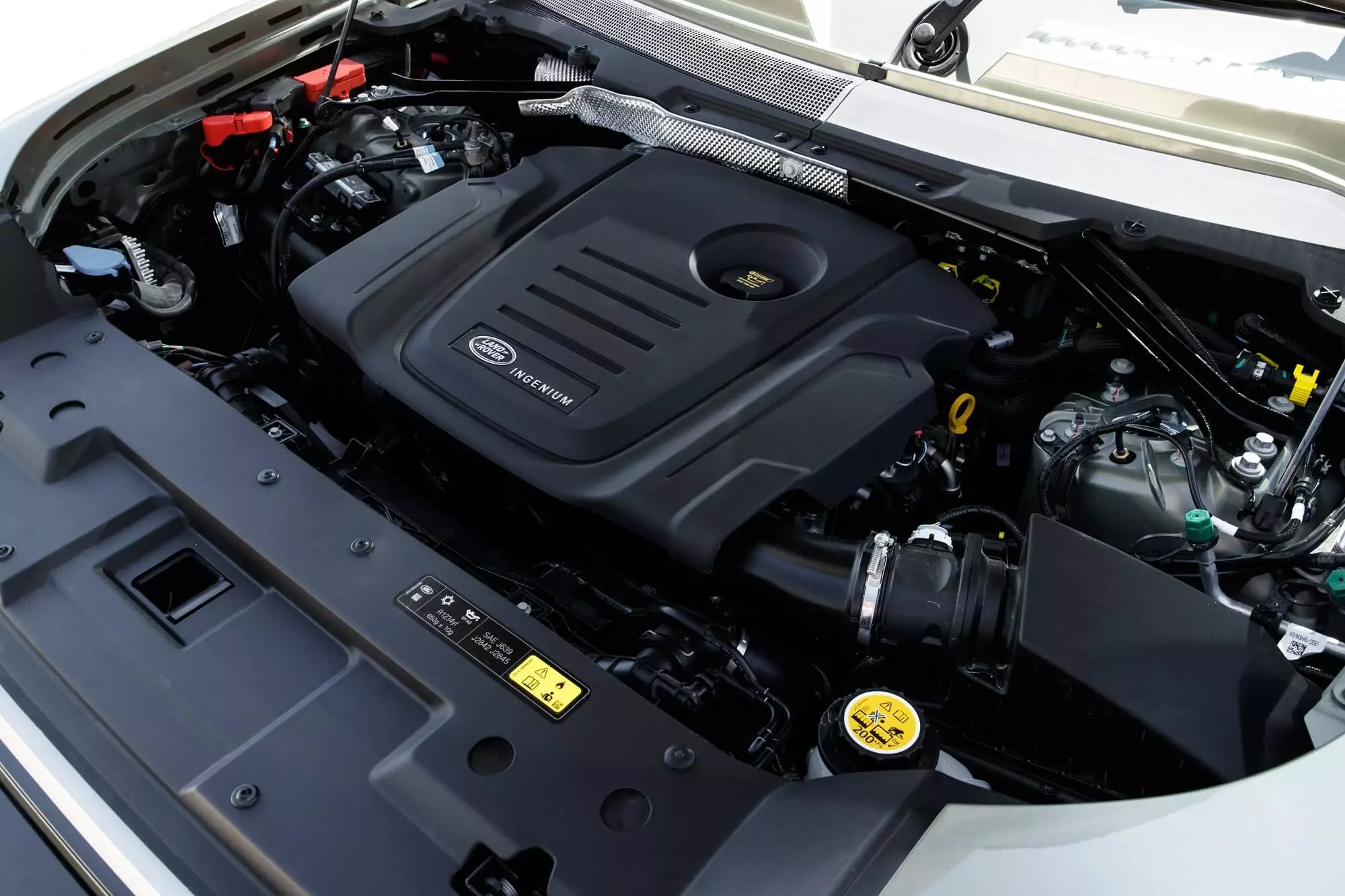
So, there are two Diesel options, a 2 liter with 200 or 240 hp and two gasoline units: a 2 liter with four cylinders and 300 hp and a V6 with 3 liters and 400 hp that is associated with a mild-hybrid 48V system .
In the latter, an electric motor (assisted by a lithium-ion battery) serves as a generator and a starter motor, while also assisting the gasoline engine with some energy in “free time”.
Electrification, a good ally
It was precisely the mild hybrid version (the most powerful of the entire range of the new Land Rover Defender) that we tested in this first dynamic contact.
Subscribe to our newsletter
The Defender P400 moves with a vivacity that commands some small GTi respect (having 550 Nm under the right foot from 2000 to 5000 rpm helps). Proof of this are the 6.1 s in acceleration from 0 to 100 km/h and the 191 km/h of top speed.
The 8-speed gearbox, signed by ZF, thanks the electric push in intermediate accelerations, but it also does a very good job in “digesting” what is sent to it by the engine. At the same time, it invites a sportier drive if we place the automatic gear selector in the “S” position.
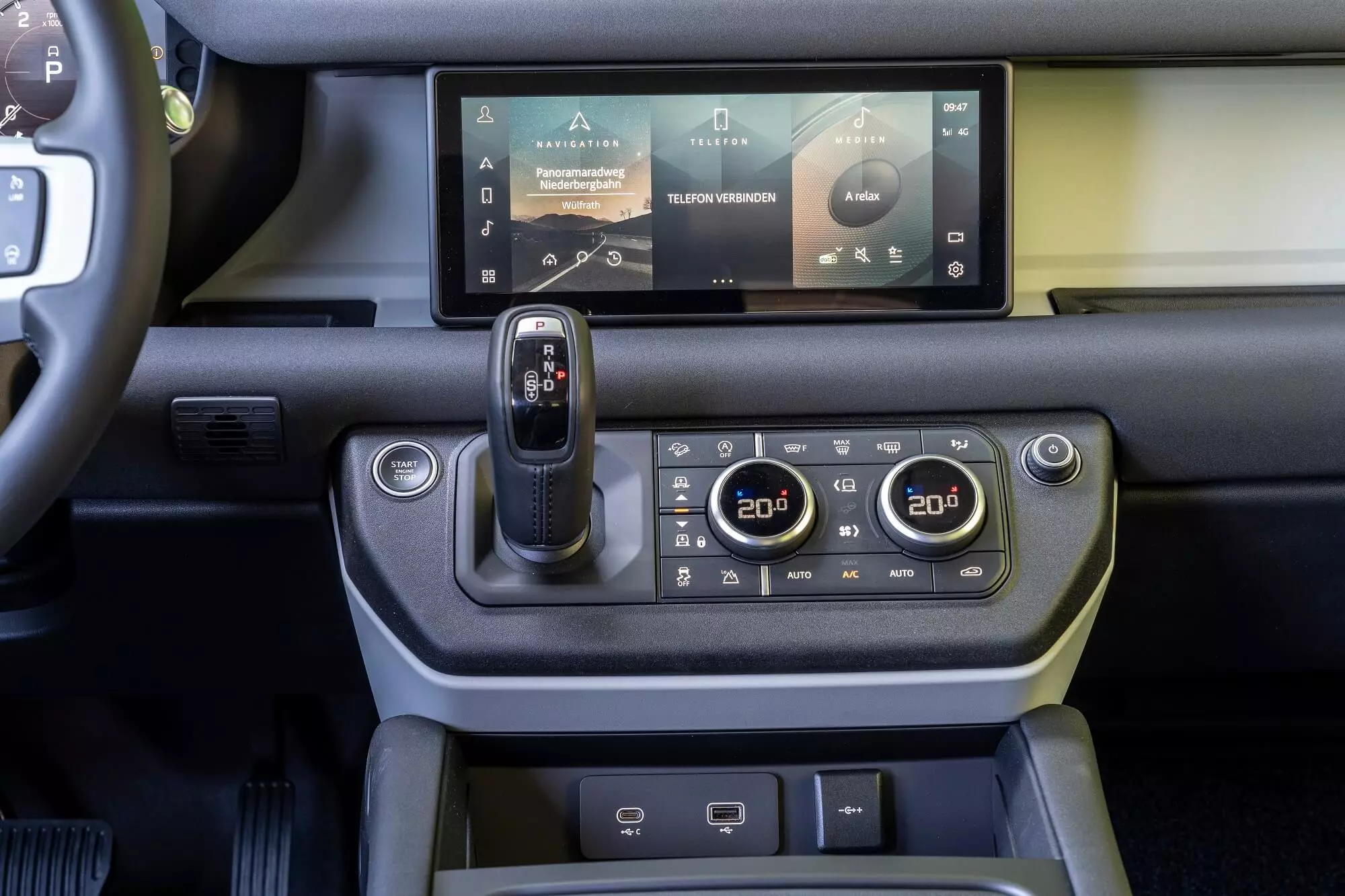
It manages to be quick and smooth, which is appreciated both on asphalt and in the middle of a slope made of rocks or mud, a place where reducers are as useful as a net for a trapeze artist.
The V6's sound is always refined, with low lyric singer frequencies, but never too present. This is the result of a joint effort to refine the engine and soundproof the cabin.
When the objective is to “loss speed”, the brakes deserve our approval for their “bite” power, but also for not showing early signs of fatigue in more intensive uses.
The only exception is on long descents and with lots of curves. In these cases, the pedal on the left starts to descend a little more after many requests.
Conquering new habitats
Unlike what happens with modern SUVs, Defender assumes itself as a 4×4. Proof of this is the natural inclination of the bodywork (without causing nausea or worryingly risking stability). After all, they are always almost two meters tall and 2.5 tons in weight…
And if the skills that serve to leave the most inhospitable terrain behind are already well documented, their compatibility with the urban habitat has evolved exponentially.
In addition to the improved driving position, there's now a steering that does much more than merely point the wheels in the right direction, a ride comfort and damping capability (electronic shock absorbers come standard) that make the original Defender look like a car. cart.
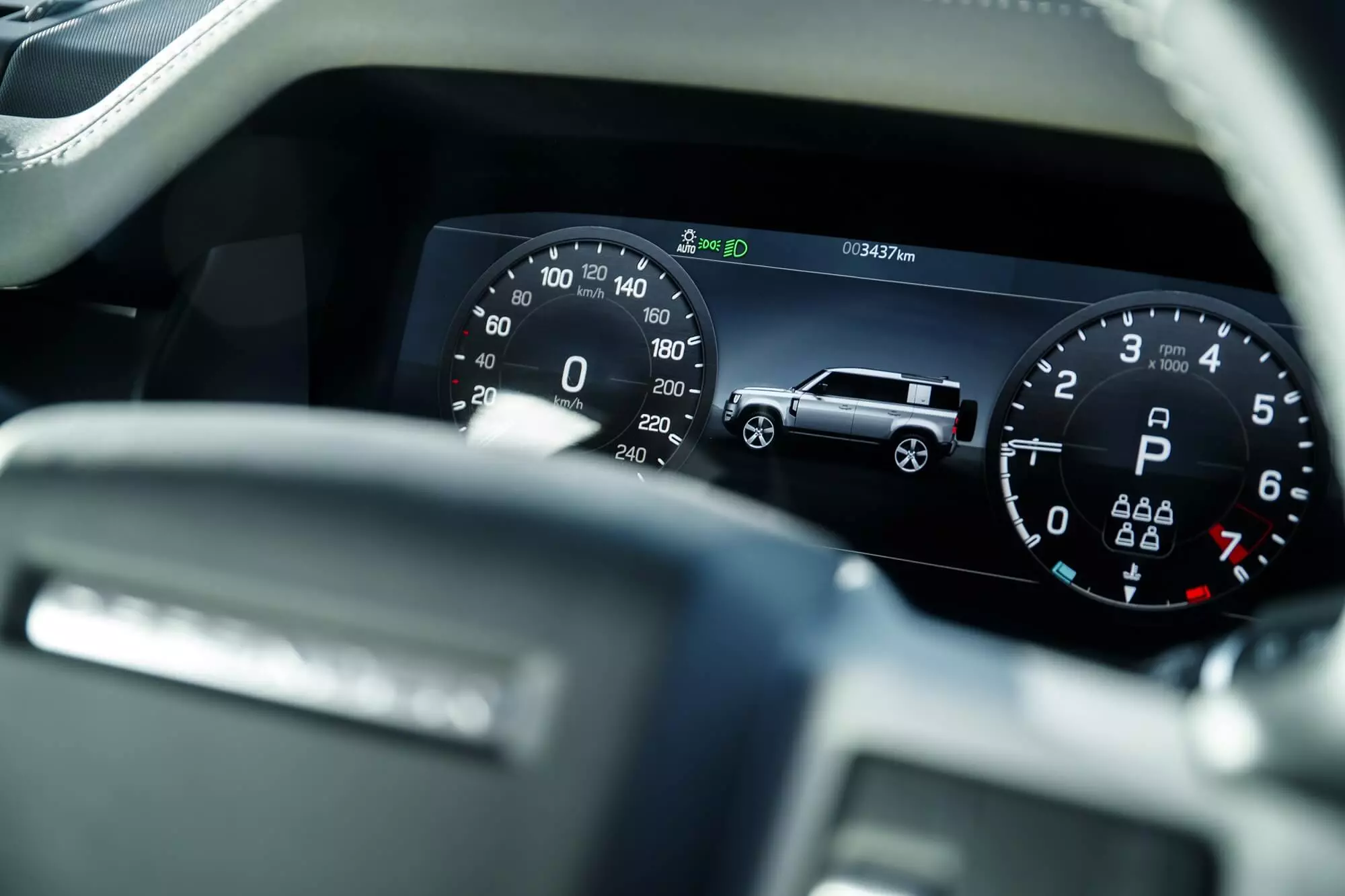
The average day-to-day consumption will be close to 15 l/100 km, even if you use the right pedal sparingly.
Good views of any type of "jungle"
At the wheel we immediately noticed that visibility to the outside is very good, thanks to the low waistline, high seats and generous glazed surface.
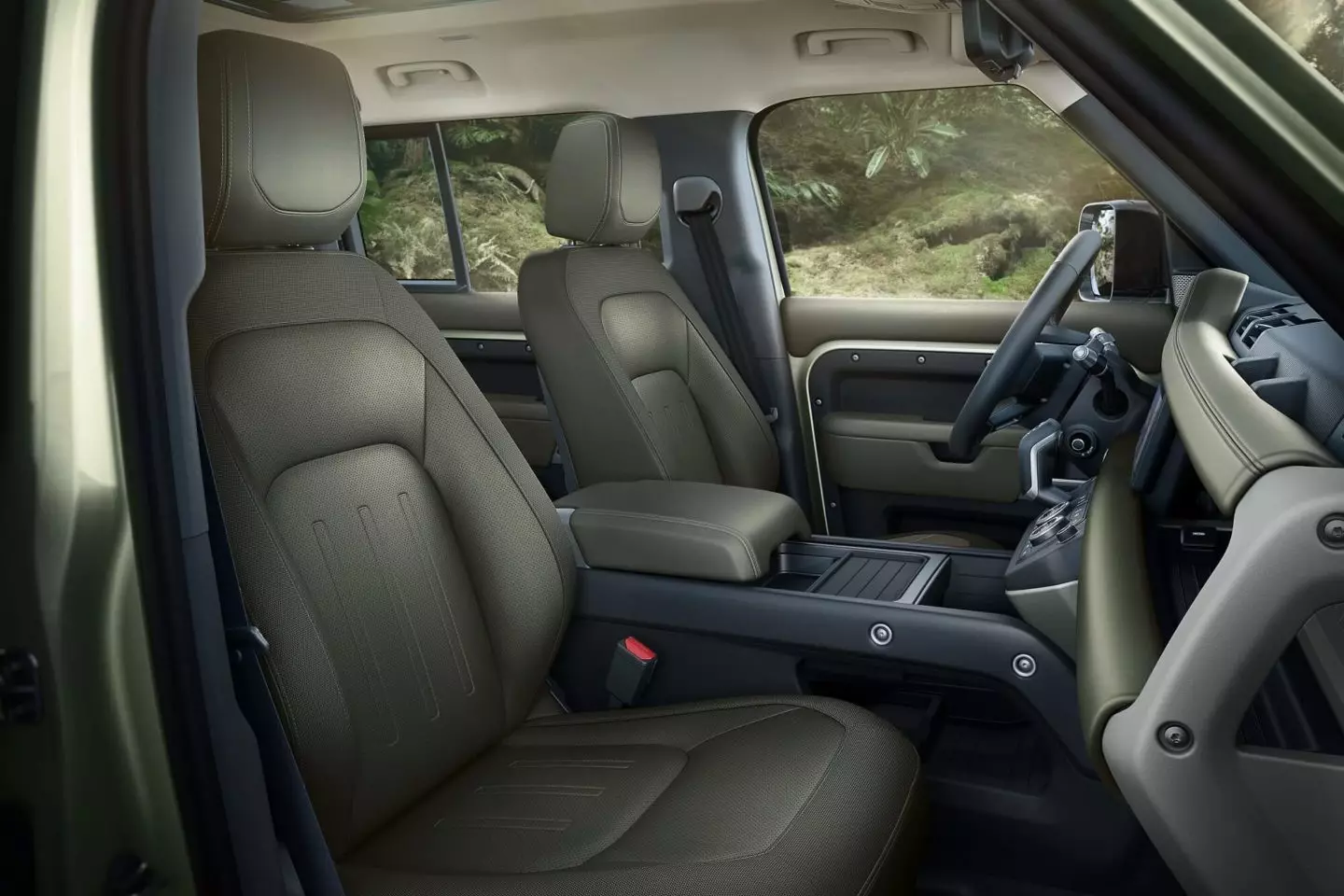
The arm is not “crushed” by the door, nor is the nose threatened by the proximity of the windshield, two of the strong personality traits of the original model that disappeared with the new Land Rover Defender.
Speaking of “induced” visibility, the 360° monitoring system should be highlighted. This one lets you see what's around and even under the Defender, whether asphalt, sharp rocks threatening the tires, craters in the middle of the trail or steep slopes covered by the hood.
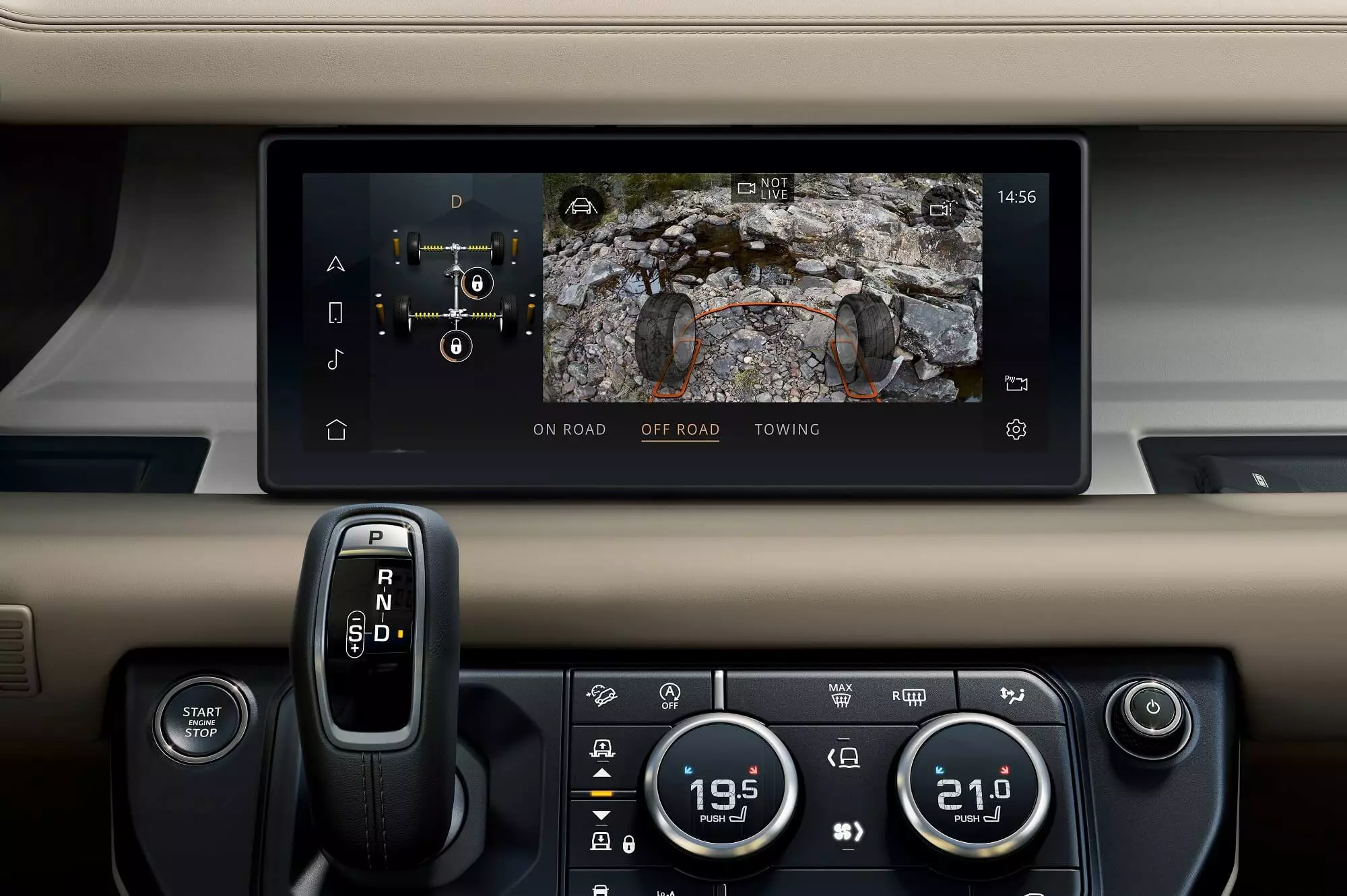
Connectivity on the rise
Other signs of modernity are the head-up display, the digital instrument panel or the touchscreen surrounded by more USB ports than you find in an office.
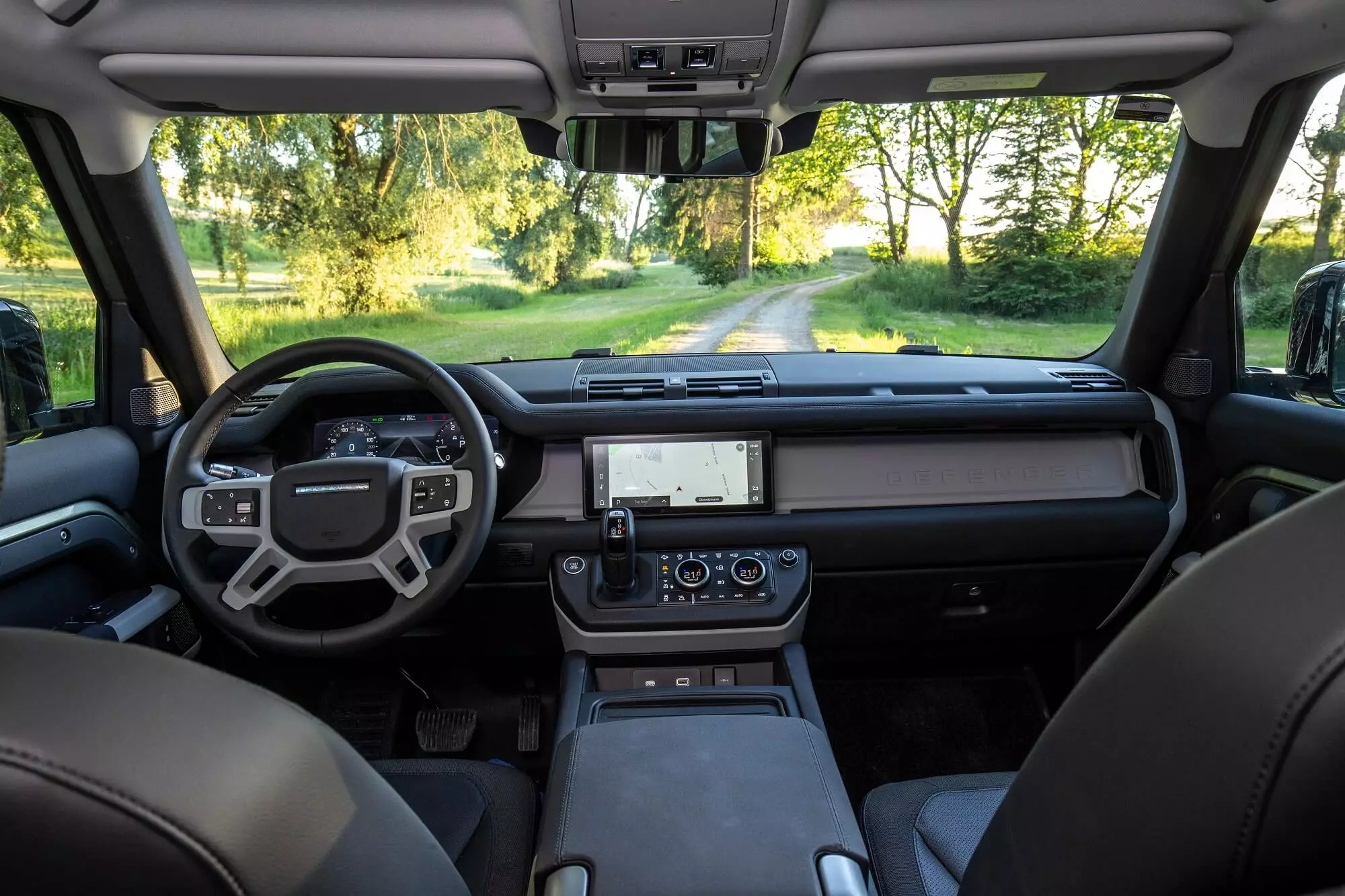
There is no doubt: the “motorized wagon” has become a kind of computer on wheels, with more software than many commercial planes.
What to think about this “invasion” of digital screens and controls? On asphalt they are practical, intuitive (after a period of getting used to) and help to free up space.
In the midst of jumps and swings, it can be tricky to get right where you want on the touch screen to select the desired function, but this is called technological advancement and there is no reverse gear.
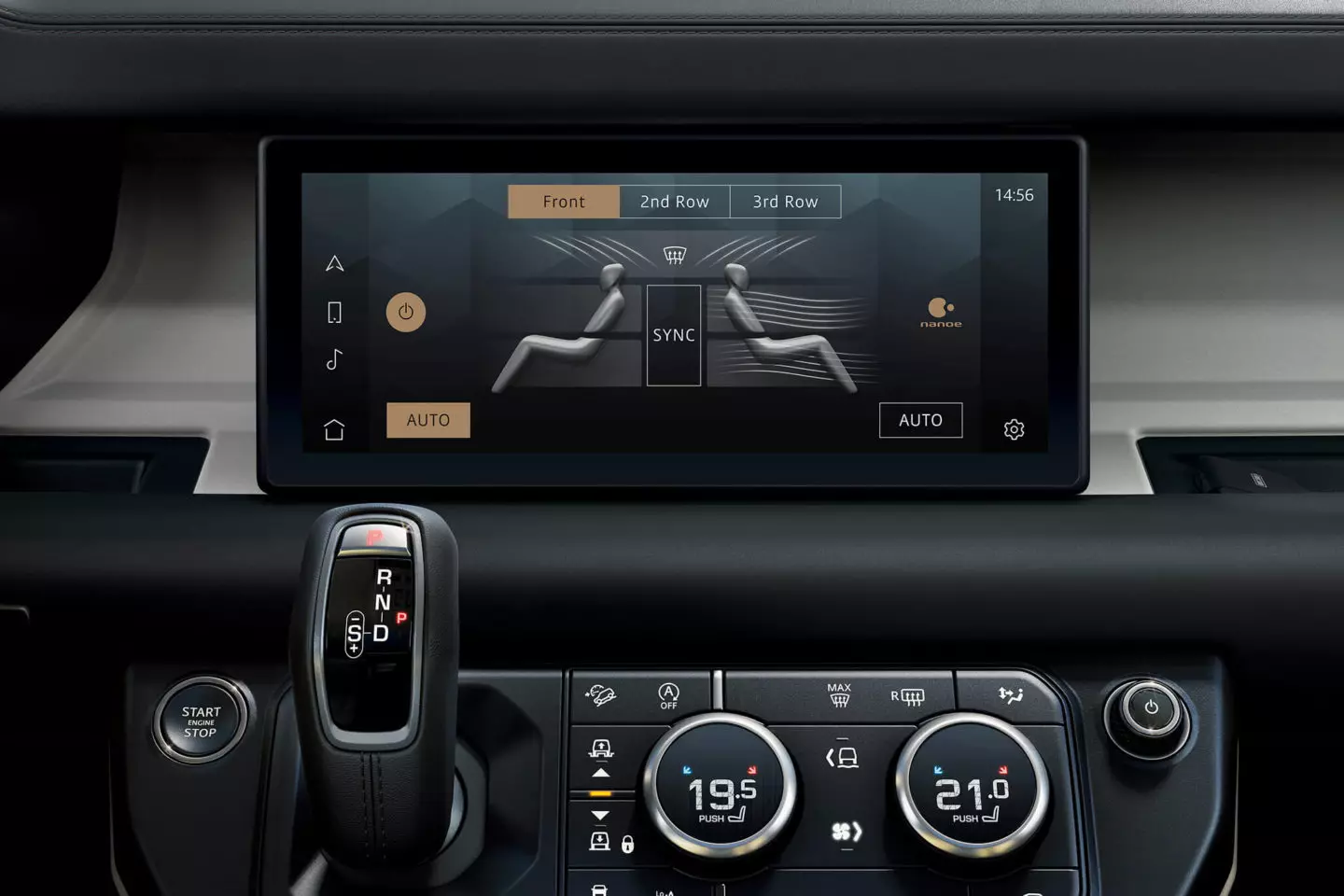
Infotainment is always online, with the operating system up-to-date via 5G chips while driving.
The magnesium support between the front seats not only supports the occupants but also helps raise body rigidity (the new Defender has the highest body rigidity of any Land Rover).
Finally, to ensure that the new Land Rover Defender maintains the "meccano air", the English brand makes a point of leaving some screw heads in sight, both on the doors and on the console itself.
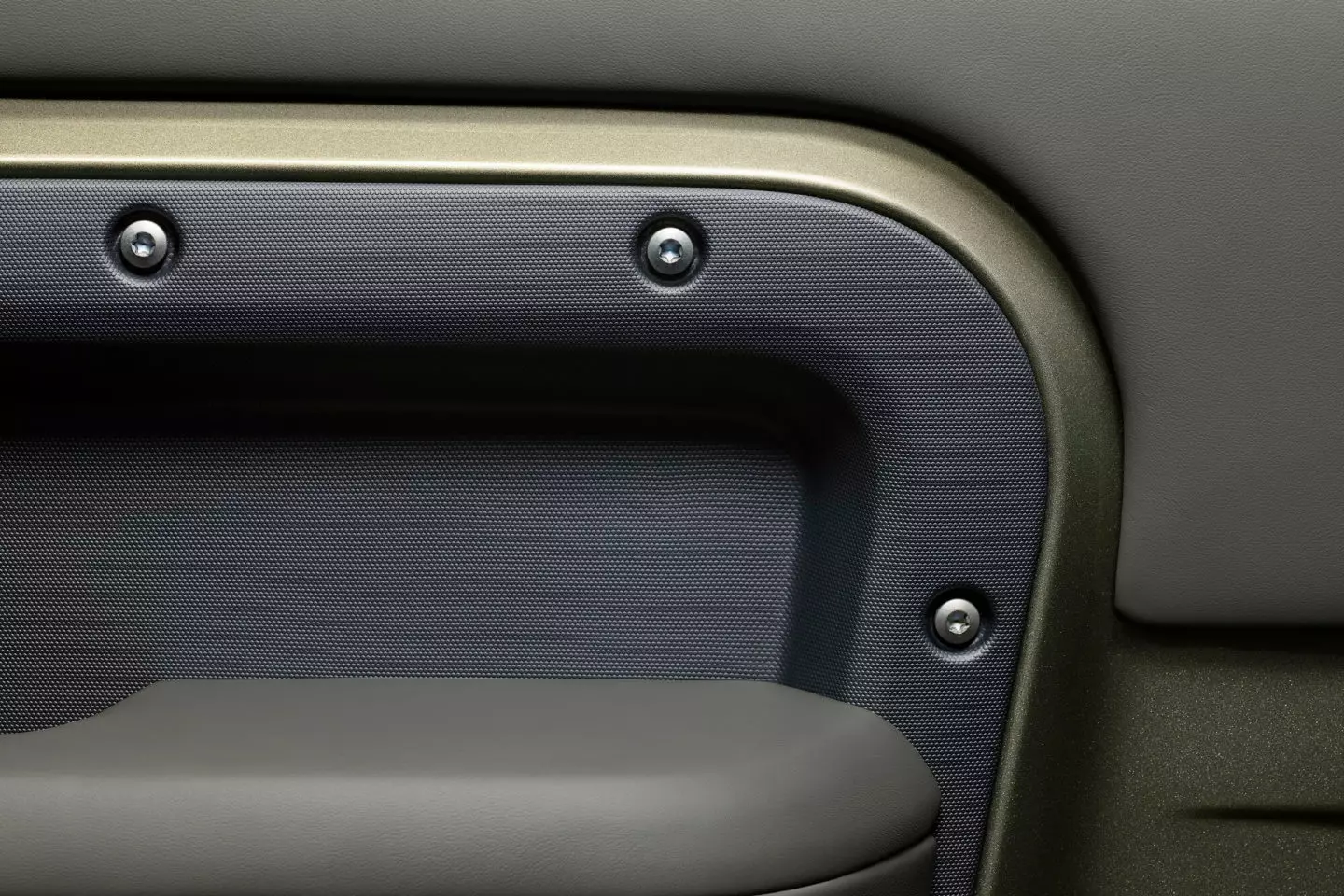
Fit 5, 6 or 7
In the interior configuration, it is possible to opt for a third front seat. This not only can be used to transport a passenger (as long as it is not too big or the trip is short) but also serves as a central armrest.
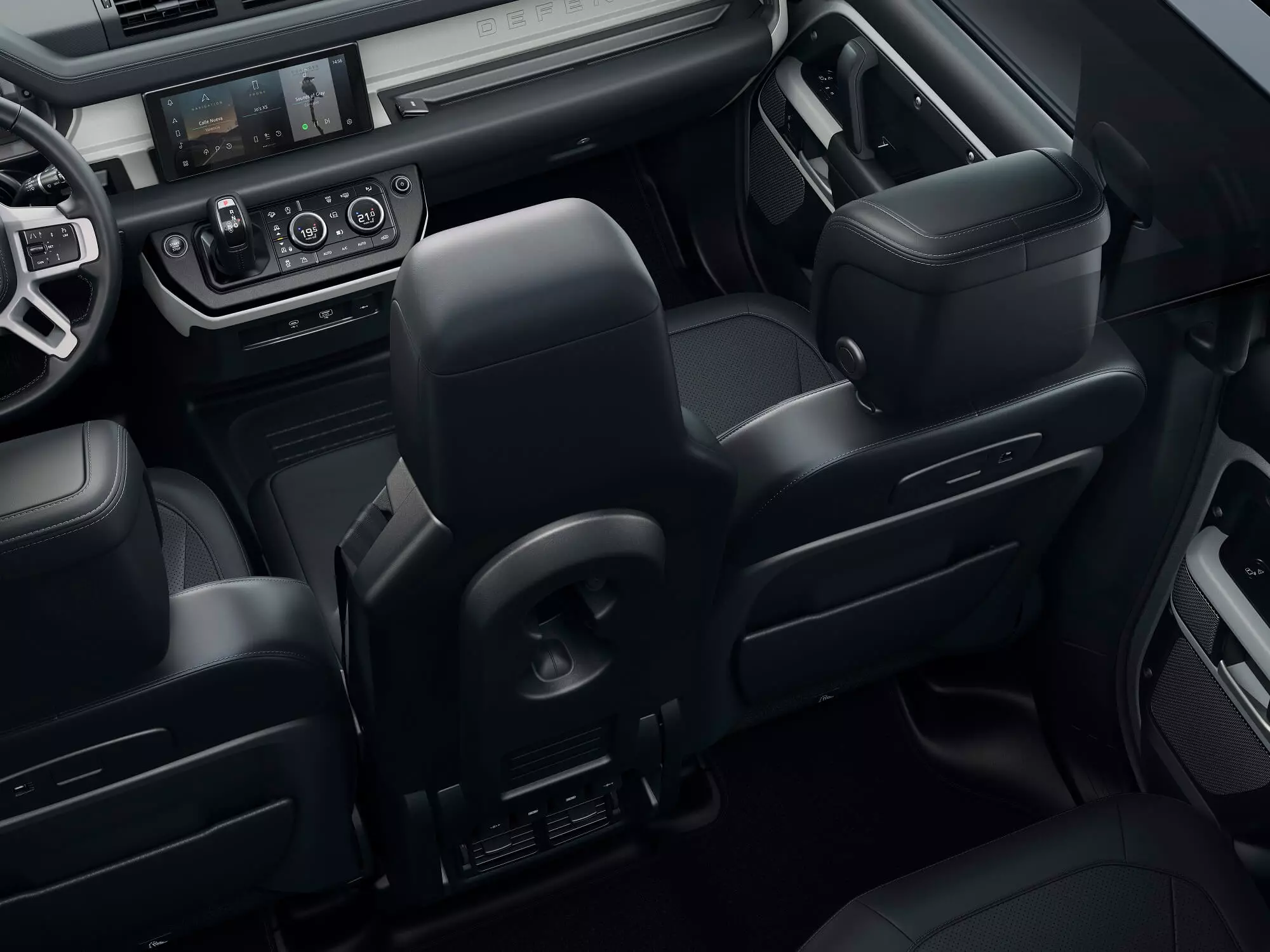
When this third seat is in use (or the rear window is covered), the interior mirror displays an image taken by a digital camera outside, so the driver can continue to see behind the car, not pinching safety.
Although interesting, this solution undermines the sense of depth a little, making it seem like any vehicle that follows us is about to crash into Defender's rear…
The 5-door version we tested is called 110 (a reference to the wheelbase, in inches, of the ancestors) and is much larger than the 3-door 90.
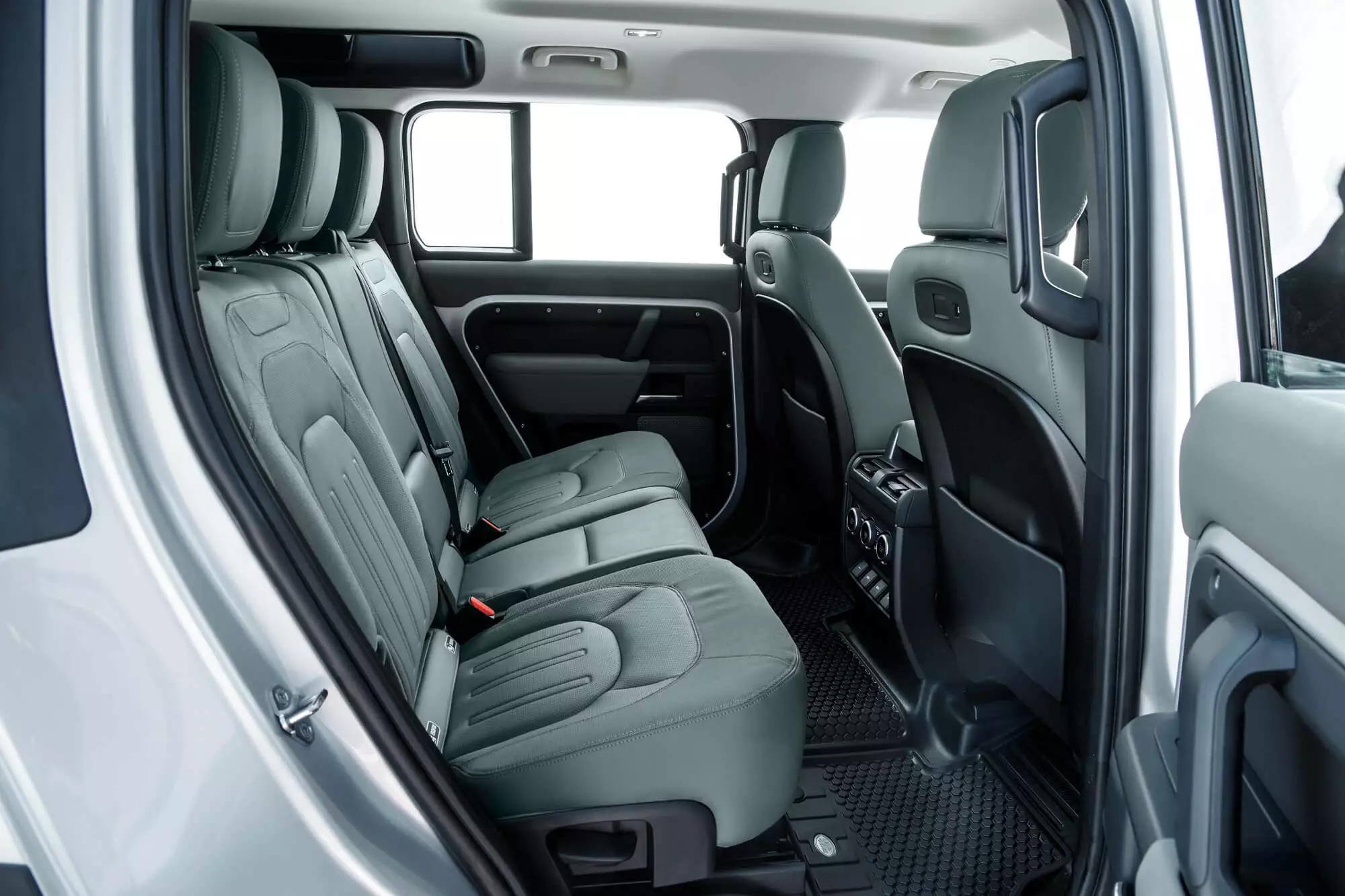
Interestingly, despite being much shorter than the 110 version and measuring 44 cm less in wheelbase, the three-door version can carry six passengers (with the exception of the commercial variant).
Speaking of wheelbase, in the case of the Land Rover Defender 110 this is 3 meters (10 cm more than on a Discovery), which is why it is possible to carry five to seven people, in two or three rows of seats, ensuring that , with five on board, the space is ample.
Finally, there's rubber on the floor of the luggage compartment, all so it's easy to clean. Passengers in the second row of seats have direct ventilation outlets with independent temperature regulation.
Technology to never get in the way
As much as the new Defender winks at digital natives and makes driving as close as possible to a simulation, none of this prevents it from continuing to be, above all, a very competent vehicle for the “hard” off-road vehicle.
There are still enough traditional switches and buttons, but clearly less “pure” because electronics and automated or semi-automated processes have taken over many of the operations.
One of the most important helpers for those who really subject Defender to “hard and clean” paths (in this case deeper waterways) is the “Wade Sensing” system.
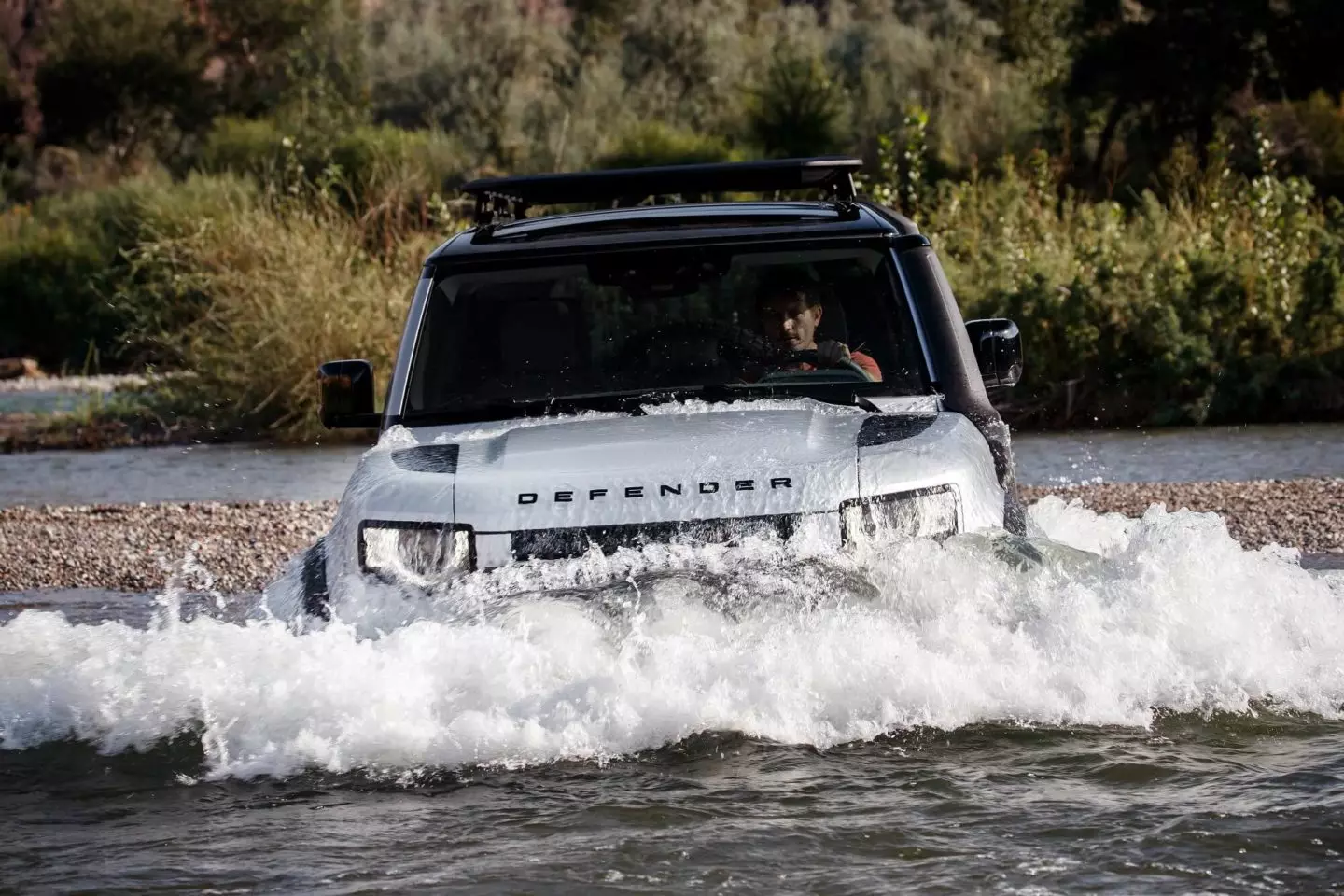
This allows you to know the depth of the water before “diving”. It's just that despite the Land Rover Defender being able to “have foot” up to 900 mm, it's not appropriate to go beyond that.
We can see on the central screen the depth of the water in front of us and an animation of Defender advancing down the stream.
At the same time, the system configures the ventilation to recirculate air through the cabin, smoothes the throttle response, raises the height of the body and adjusts the operation of the differentials.
On dry land, the system presses the brake pads against the discs to clean and dry them. Impressive.
The vast electronic arsenal defines a bit of the environment on board and influences the way the Defender moves: “Terrain Response2” is the name of the central assistance system that Land Rover has refined to make any novice an expert with aspirations to participate in the Dakar .

And with the particularity of being able to do so with a vehicle with a monocoque chassis (instead of spars), independent suspension on four wheels with double superimposed wishbones at the front and multi-arms at the rear — with additional tie-rods in place of the rigid axle to benefit from lateral rigidity — with a lot of aluminum and with a sub-frame front and rear in steel.
All solutions that have contributed to the torsional rigidity being three times greater than that of the old predecessor.
The platform, on the other hand, starts from what we know as D7 in the Jaguar XE and adds an “x”, of 4×4, receiving the longitudinal engine and, of course, four-wheel drive.
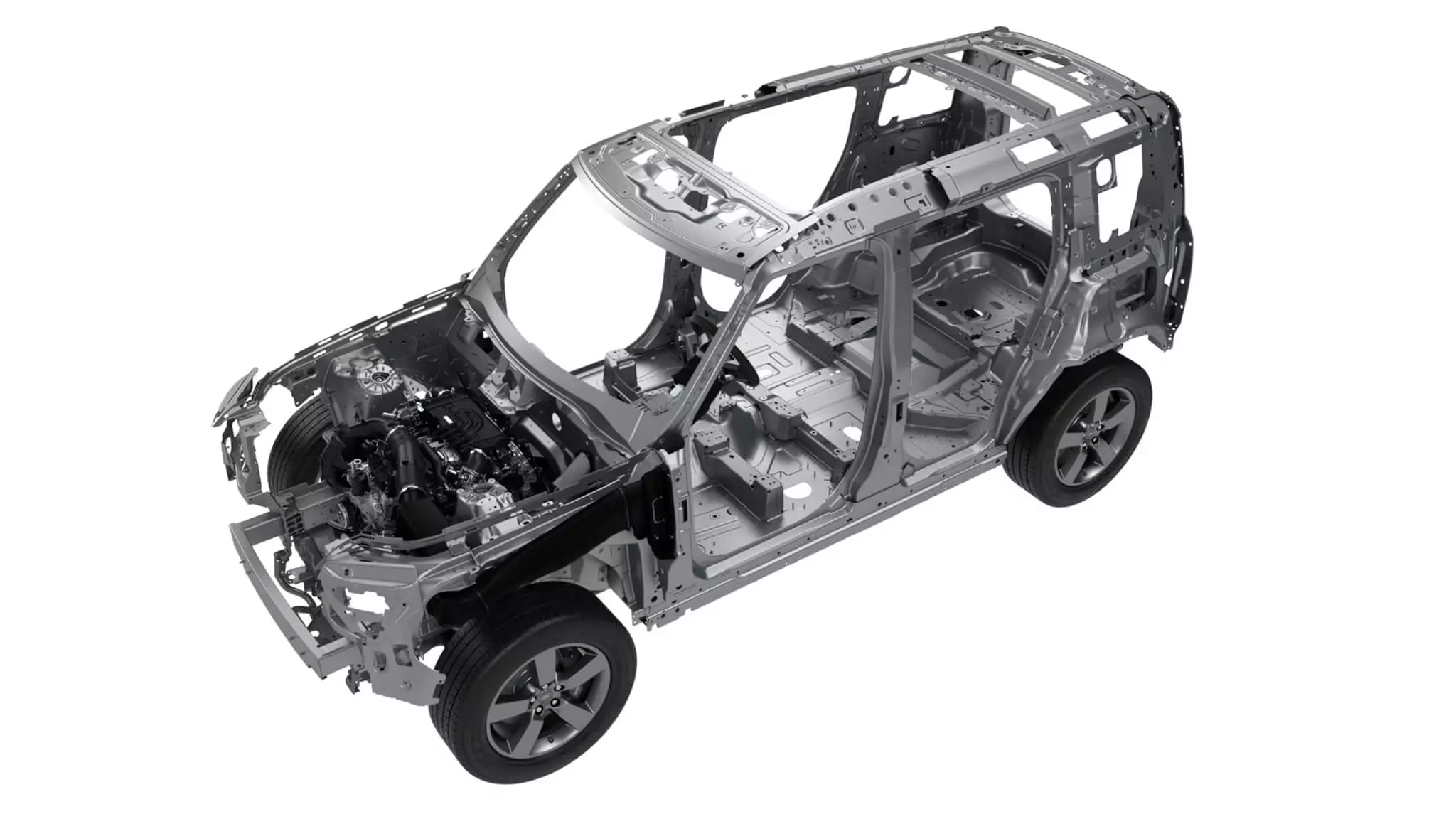
4×4, reducers, pneumatic suspension, electronic shock absorbers…
It's for the Land Rover Defender to adapt to its surroundings. Suspension, stability control, automatic transmission and all-wheel drive power distribution “move into” the driver's choice by simply touching the central screen.
On deep sand terrain, lowering the tire pressure and engaging the gearboxes will almost always be enough to avoid getting stuck.
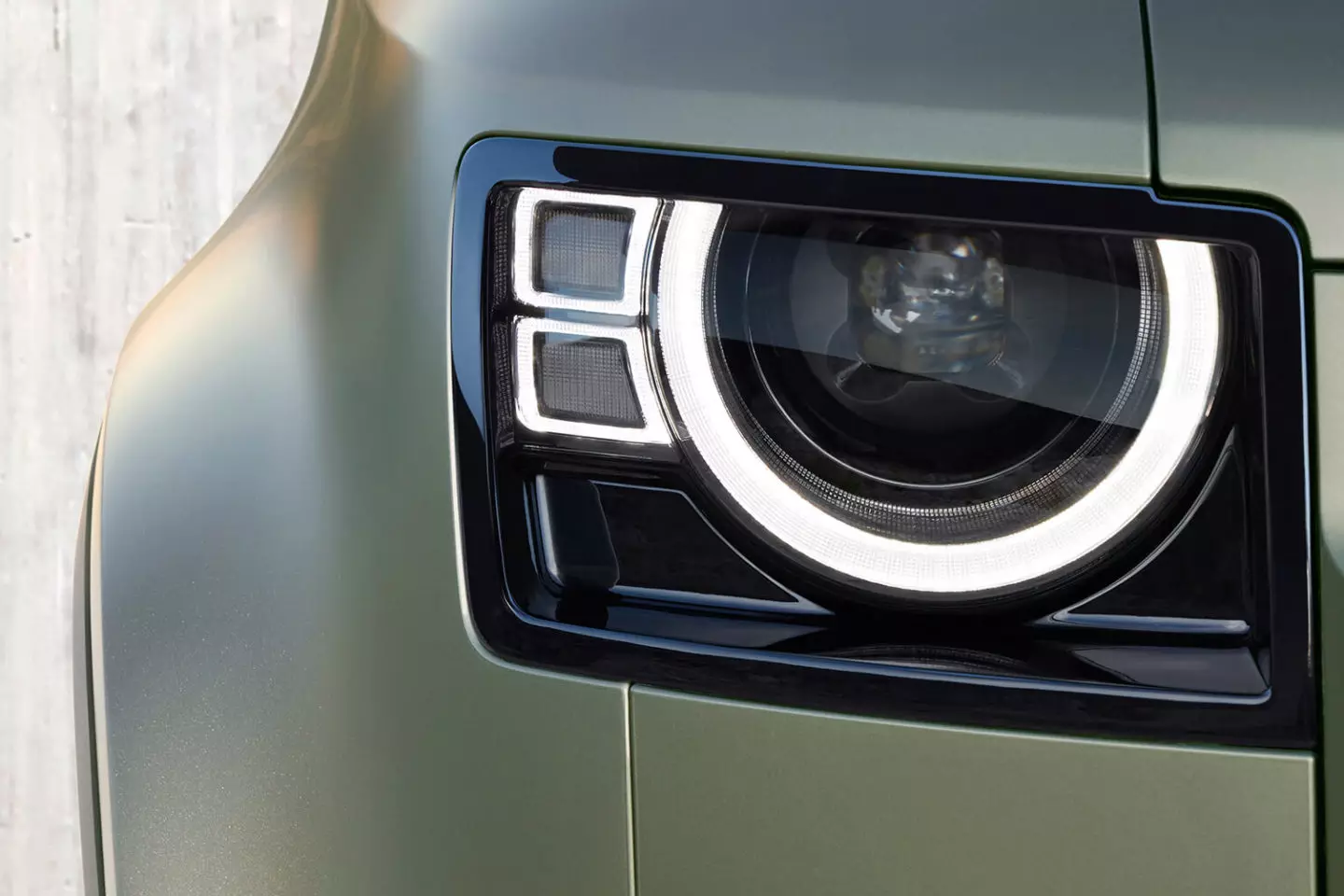
If there are threatening rocks under the Defender it will be useful to raise the suspension (up to 75 mm) thanks to the air suspension (standard on the 110).
On his way to a fancy restaurant, Defender plays a gentleman helping the lady in high heels and lowering the suspension by 5 cm.
Regardless of the wheel size (there are 18 to 22” wheels), the characteristic rough terrain angles are the best on the market, surpassing the Jeep Wranger, Toyota Land Cruiser or Mercedes-Benz G-Class.
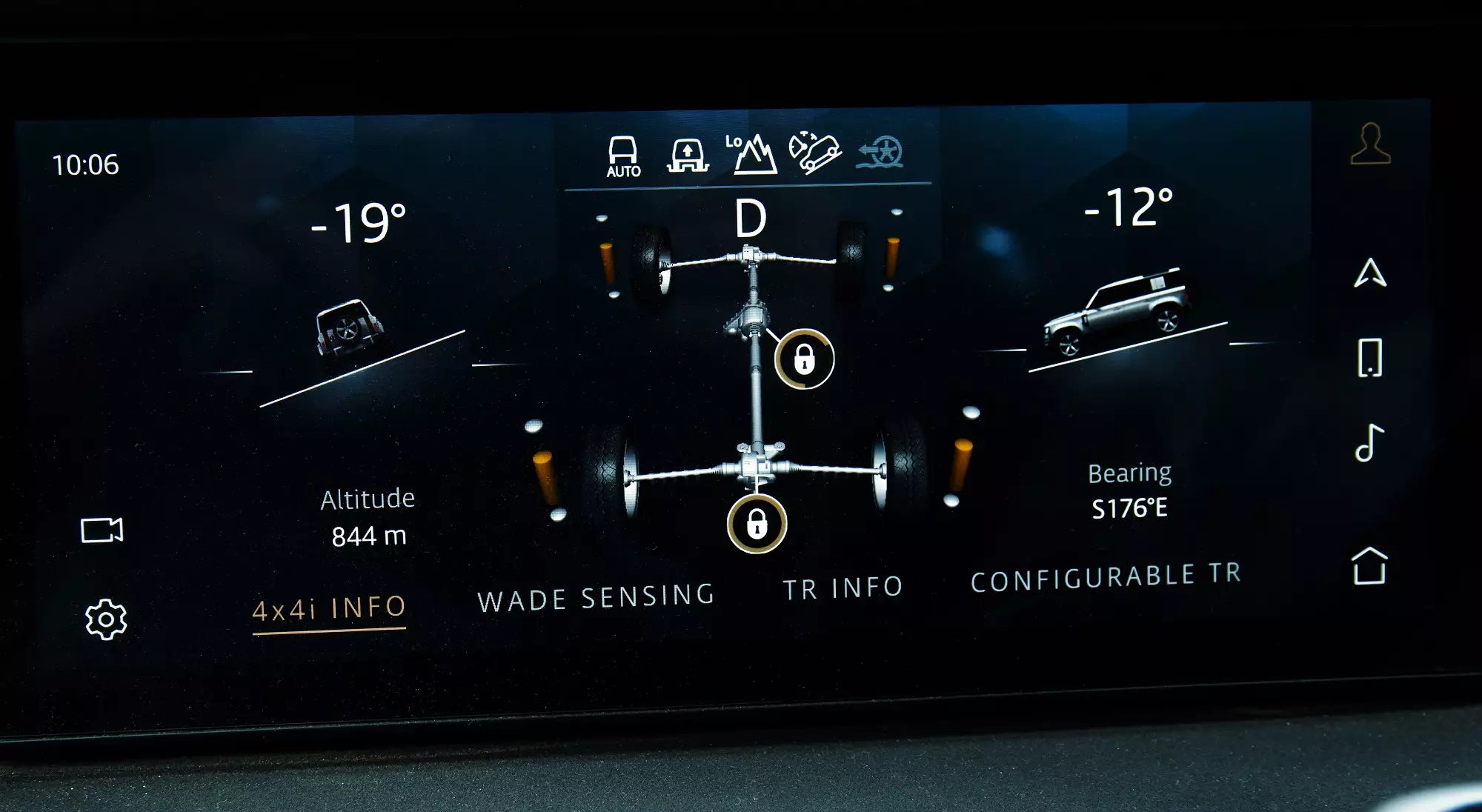
In part this is due to the air suspension that rivals do not have (proof of this is that the Defender 90 is no longer able to stand out in this field, as it has coil springs instead of pneumatics).
In the comfort chapter, it is even possible to project the tow hook from the inside of the car or weigh the load of the towed vehicle.
There's even an advanced trailer assistance system that lets the driver control it with their fingertips from a rotary control in the center console.
In the original Defender, the driver could lock the center differential manually, using the gearbox lever. In the new it is possible to prevent the wheels from slipping on both axles by selecting the electronic control of the central and rear differentials in the respective menu on the central screen.
There, it is also possible to choose between three engine response and 8-speed gearbox, steering and traction control settings, allowing the Defender to be “molded” to the experience in these journeys and to the expertise of the driver.
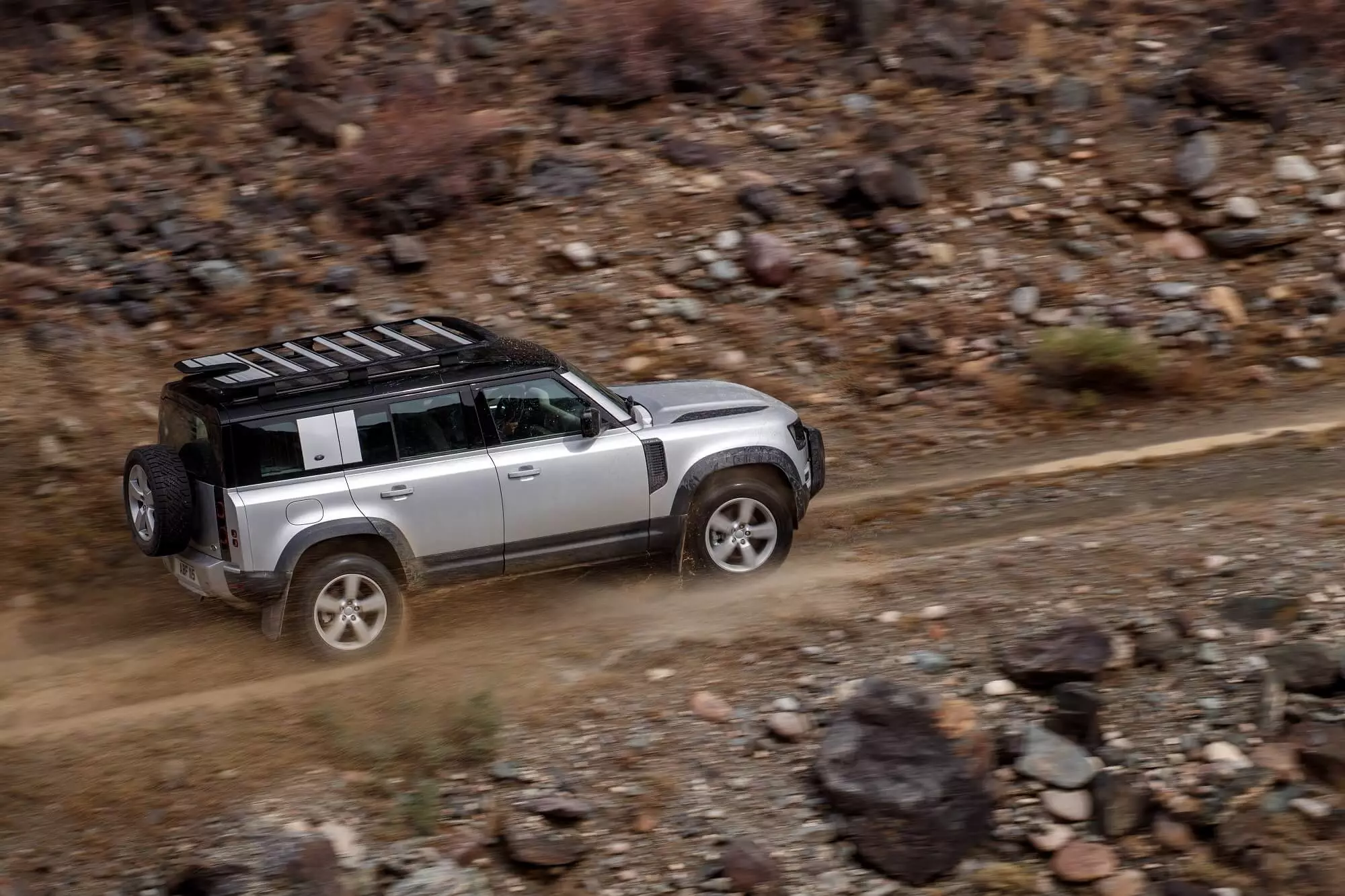
The more cautious ones always rely on the various modes of conduction of the “Terrain Response2” system (Normal for asphalt, watercourse, rocks, mud/furrows, grass/gravel/snow or sand).
Technical specifications
Already available in Portugal, the new Land Rover Defender sees its prices start at 81,813 euros in the three-door version and 89,187 euros in the case of the five-door variant.
| Land Rover Defender 110 P400 S AWD Auto MHEV | |
|---|---|
| Motor | |
| Architecture | 6 cylinders in V |
| Distribution | 2 ac.c.c.; 4 valve per cylinder (24 valves) |
| Food | Injury direct, turbo and compressor |
| Capacity | 2994 cm3 |
| power | 400 hp between 5500-6500 rpm |
| Binary | 550 Nm between 2000-5000 rpm |
| Streaming | |
| Traction | Four wheels |
| Gear box | Automatic (torque converter) 8 speed |
| Chassis | |
| Suspension | FR/TR: Independent overlapping double wishbones, pneumatics; Independent multi-arm, pneumatic |
| brakes | FR: Ventilated discs; TR: Ventilated Discs |
| Direction | electrical assistance |
| turning diameter | 12.84 m |
| Dimensions and Capabilities | |
| Comp. x Width x Alt. | 4723 mm x 1866 mm x 1372 mm |
| Length between the axis | 3022 mm |
| suitcase capacity | 857 to 1946 liters |
| warehouse capacity | 90 liters |
| Weight | 2361 kg |
| Wheels | 255/35 R19 |
| Provisions and consumption | |
| Maximum speed | 191 km/h |
| 0-100 km/h | 6.1s |
| all terrain skills | |
| Angle of attack/exit | 38th/40th |
| ventral angle | 28th |
| height to ground | 291 mm |
| ford ability | 900 mm |
| Consumption | 11.2 l/100 km |
| CO2 emissions | 255 g/km |
Authors: Joaquim Oliveira/Press-Inform.
